Can life survive till the end of universe?
How life can “cheat” its way out of the heat death of the universe
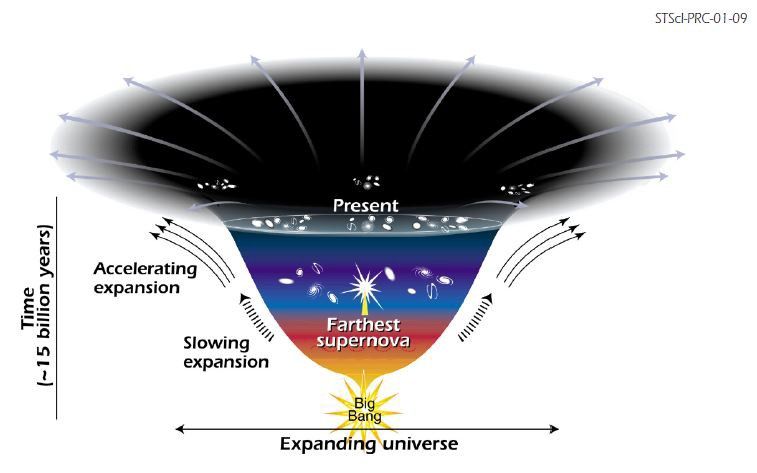
How life can “cheat” its way out of the heat death of the universe
Yes, life can survive till the end of universe!
In this article, we look into a thought experiment purposed by Freeman Dyson called Eternal Intelligence. I would also argue that intelligence can survive till the end of the universe (with infinite subjective time) only if the following three conditions are true:
- The Computational Theory of Mind is true
- The Landauer’s limit can be avoided
- Reversible computing is possible
The three conditions above are not exhaustive. I do mention at the end that recent observation of an accelerating universe might lead to interesting implications on Dyson’s eternal intelligence!
What is the ultimate fate of the universe?
Physicists theorise that ultimately, the universe subjects itself to heat death.
Also known as the Big Chill or Big Freeze, heat death is a theory on the ultimate fate of the universe. It suggests the universe would evolve to a state of no thermodynamic free energy, therefore unable to sustain processes that increase entropy. Entropy is the measurement of “disorder” of a closed system. In other words, as the universe expands further and further, the universe also distributes energy evenly across everywhere. By the Second Law of Thermodynamics, which states that entropy always tends to increase in a closed system, the universe has no heat or free energy. Hence, processes that reverses entropy (such as biological/biochemical processes in lifeforms) cannot exist.
Can intelligent life survive?
In the 1970s, Freeman Dyson was one of the first physicists to contemplate the end of the universe using modern cosmology. His eternal intelligence thought experiment was published in an exceedingly thought-provoking paper: ‘Time without end: Physics and Biology in an open universe’.
In the paper, he proposed that in the distant future, intelligent beings might figure out a way to “cheat” the Big Freeze — survive the Heat Death of the universe. Intelligence could reside, for example, in the pattern of electrically charged dust grains in an interstellar cloud, a situation described in the 1957 science fiction novel ‘’The Black Cloud,’’ by the British astronomer Sir Fred Hoyle.
As an intelligence that resides in the black cloud cooled, he argued, it would think more slowly, but it would always metabolise energy even more slowly. So its input would always be less than its output.
Before the final death of the universe, the intelligence can store a finite amount of energy. Then, they would then use half this energy to power their thoughts (the only remains of their super-advanced lives, assuming that their life-form is now ethereal). In fact, Dyson concluded, by making the amount of energy expended per thought smaller and smaller the intelligence could have an infinite number of thoughts while consuming only a finite amount of energy.
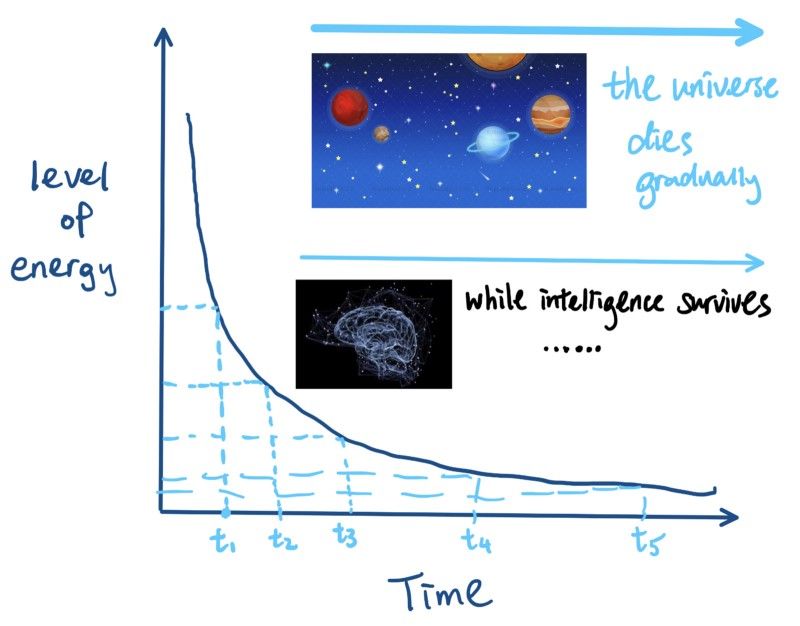
But there was a hitch. Thinking requires energy and generates heat, similar to why computers have fans. Dyson suggested that creatures would have to stop thinking and hibernate periodically to radiate away their heat. These two strategies can continue indefinitely. As he wrote:
“This example shows that it is possible for life with the strategy of hibernation to achieve simultaneously its two main objectives. First… subjective time is infinite; although the biological clocks are slowing down and running intermittently as the universe expands, subjective time goes on forever. Second… the total energy required for indefinite survival is finite.”
While the intelligence hibernates, the universe would continue to cool. However, after a certain point, another half of the remaining energy reserves would be released, allowing them to think once again. This cycle goes on infinitely. The subjective time of the intelligence becomes infinite and it can survive til the end of time (if there even is one).
Consume energy and think → save energy and hibernate → consume energy and think → …..all over again
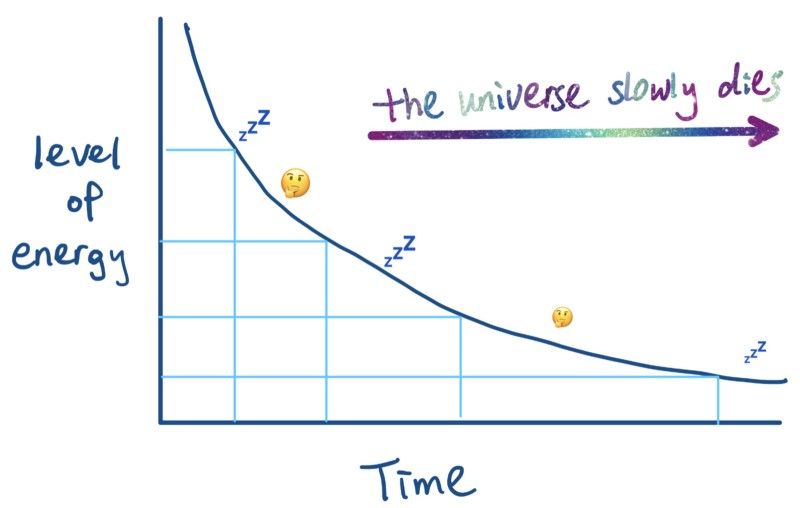
If you are still reading, you are probably wondering: why is the subjective time of the intelligence infinite?
The reasoning behind is a philosophical thought experiment known as a super-task, which is the idea of performing some infinite action or series of actions in a finite period of time. In Dyson’s eternal intelligence, thinking happens infinitely (broken into think/hibernate state alternations) with one finite constraint — initial energy stored.

A famous example is the first of Zeno’s Paradoxes, the Paradox of the Dichotomy. The runner Achilles begins at the starting line of a track and runs ½ of the distance to the finish line. He then runs half of the remaining distance, or ¼ of the total. He then runs half the remaining distance again, or ⅛ of the total. And he continues in this way ad infinitum, getting ever-closer to the finish line. But there is no final step in this task.
Dyson’s eternal intelligence is possible….
- If The Computational Theory of Mind is true
- If the Landauer’s limit can be broken
- If reversible computing is possible
Let’s take a look at each of these conditions one by one.
(1)….if The Computational Theory of Mind is true
Dyson holds a reductionist view of intelligence. In fact, he subscribes to a view called The Computational Theory of Mind (CTM).
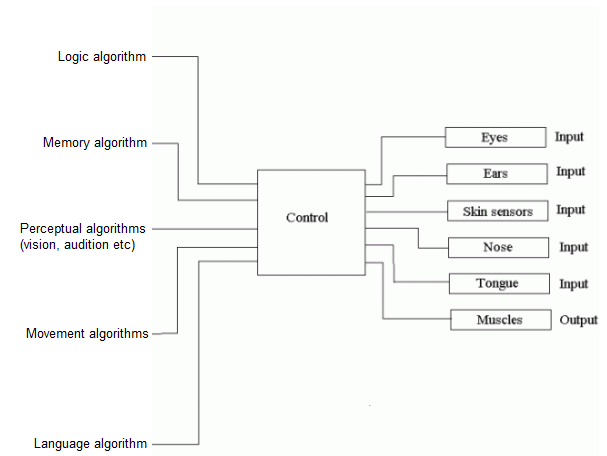
CTM views the mind as a computer. So what goes on inside the mind is really just computation. Dyson also did not make a distinction between intelligence, consciousness and thoughts. After all, he is a physicist, not a philosopher. However, it would be interesting to see if a conceptual distinction would result in a different “eternal intelligence”.
There is a possibility that Dyson’s eternal intelligence allows for a Matrix-like scenario. The Black Cloud can host a computing engine which also hosts trillions of intelligences within it. These intelligences all interact with each other in a giant virtual reality wonderland. The computer simply “computes” this virtual reality, consumes and hibernates alternatively as Dyson thought it would. The subjective time within the virtual reality can be infinite while the objective time outside of the virtual reality (universe-time) can be finite.
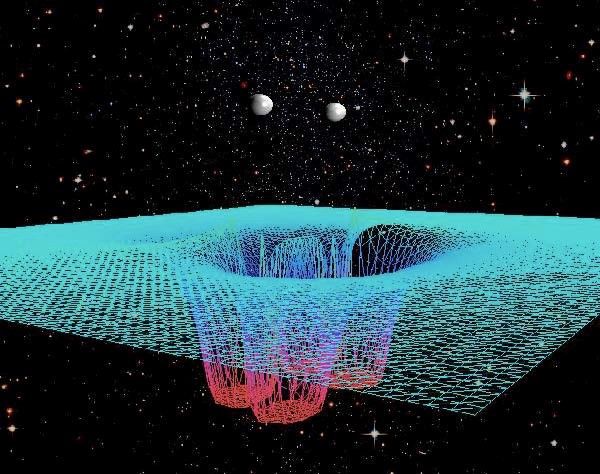
How does CTM affect the validity of Dyson’s eternal intelligence proposition? If intelligence turns out to be much more than mere computation, then Dyson’s argument is false. Surviving at the end of universe is not just about energy and computation.
Perhaps organic substance is the key. Or the molecular structure that gives rise to consciousness is the key.
(2)….if the Landauer’s limit can be avoided
Landauer’s Principle dictates the lower theoretical limit of energy consumption of computation. For example, erasing a bit (which contains either “0” or “1”) of information gives off an amount of heat related to the temperature and Boltzmann’s constant — a total of 3 x 10^-21 Joules at room temperature.
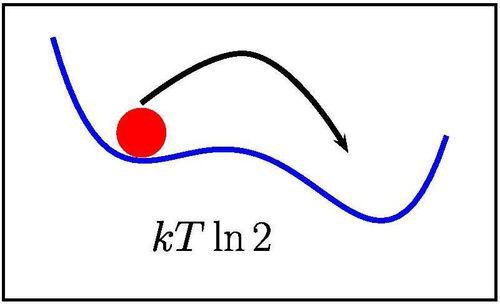
To empirically test Landauer’s Principle, researchers created a simple two-state bit: a single microscopic silica bead held in a “light trap” by a laser beam. The trap contains two “valleys” where the particle can rest, one representing a 1 and the other a 0. It could jump between the two if the energy “hill” separating them is not too high. They measured the average heat dissipated over many erasure cycles, showing that it converges to (but never exceeds) the limit set by Landauer’s Principle. The limit, also called, Landauer’s Limit, is always 3 x 10^-21 Joules at room temperature.
While this might sound overly philosophical, it has real implications on how chips in computers and phones are designed, even in the very one that you are using right now.
Semi-conductor chips are made of logic gates. Logic gates process inputs (binary) and turn them into outputs (also binary).
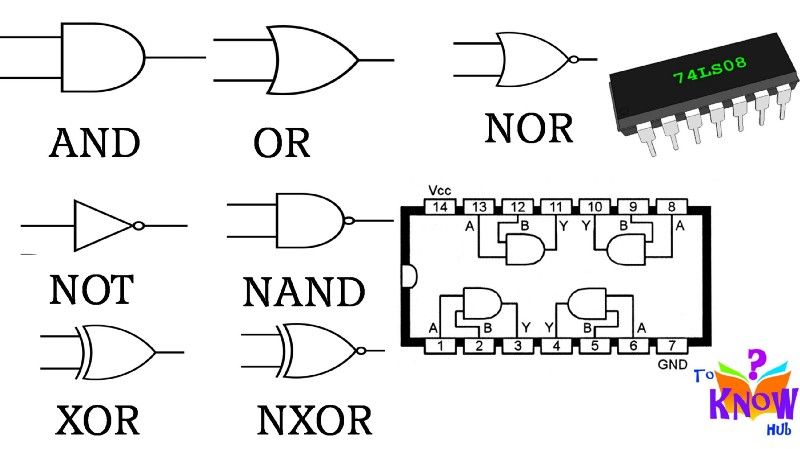
These logic gates are called irreversible computing. They are irreversible because you cannot figure out the input from the output.
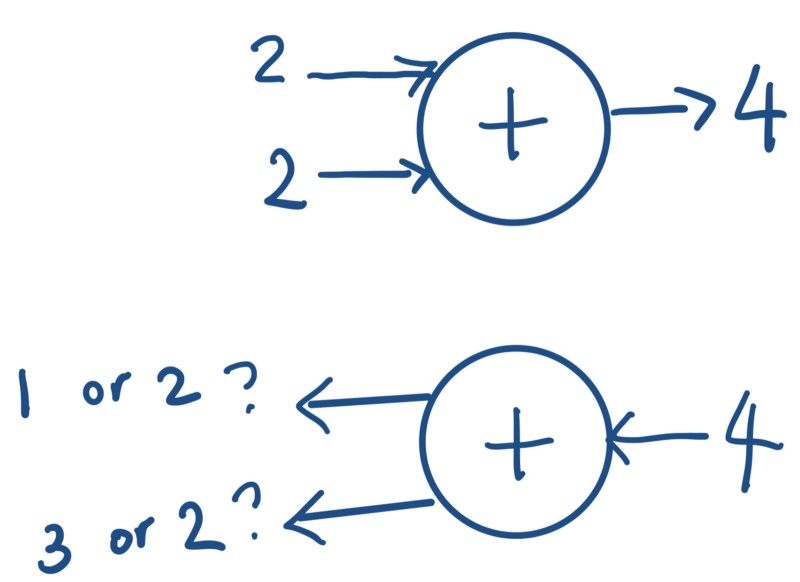
Let’s say that there are two inputs: 2 and 2. They go through the “plus” gate and we have the output 4.
If we reverse the plus operation, do we know what our inputs are, only knowing that the output is 4?
No we cannot. The inputs might be 2 and 2, or 1 and 3. Information about the input is lost.
Landauer’s Principle actually has a more nuanced formulation. It states that any irreversible computation (removal of information) must dissipate a minimum amount of energy (heat).
Important to note here that there is no explicit mention of energy consumption in Landauer’s Principle. However, we can draw a link between heat dissipation and energy consumption:
- Assume that computation itself as a process does not absorb energy
- Logic gates give off heat
- There must be a source of heat running through logic gates
Conclusion: the energy consumed per bit computation must be at least as the Landauer’s Limit.
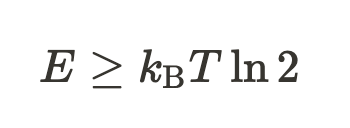
And E is the minimum amount of energy per bit computation consumes.
Now, we’re very far from that minimum in practice. We are within several orders of magnitude of this limit.
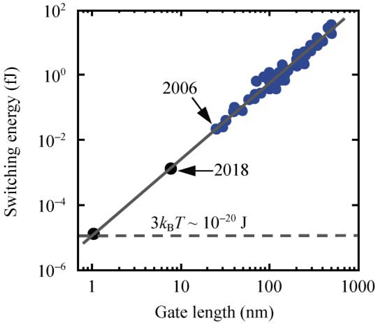
How does this relate to Dyson’s eternal intelligence? If we stick with irreversible computing, it means that Dyson’s intelligence cannot consume energy forever. At some point, the energy available in the universe will be lower than Landauer’s Limit. Hence, computation cannot occur and no intelligence survives.
The operative word here is “if we stick with irreversible computing” — which we don’t have to!
(3)…. if reversible computing is possible
If we don’t stick with irreversible computing, we can avoid the Landauer’s Limit! As far as we know, there is no physical limit as to how efficient we can perform reversible computing.
So what is reversible computing?

On the left we have an irreversible logic gate. On the right we have a reversible logic gate. If we know that the outputs are x+y and x-y, then we know the inputs are x and y! The inputs lead to outputs and outputs lead to inputs. There is a one-to-one mapping relationship between the two.
A reversible circuit has exactly as many outputs as inputs. Each input can be reconstructed from the output; no bits are lost, so reversible circuits will not give off heat from bit loss.
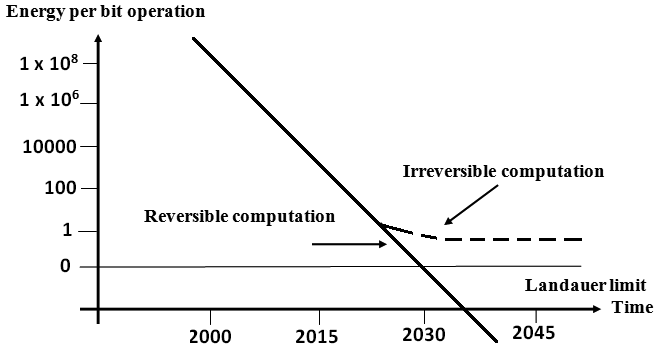
Theoretically, we can even achieve no heat dissipation per bit operation.
How can we achieve reversible computing? Fredkin gate is one possibility. Quantum computing is interestingly also reversible. That’s not the power of quantum computing per se. It happens to one of its properties.
Meanwhile, in quantum computers, which exploit the rules of quantum physics to achieve greater processing power, this limitation is already being confronted. “Logic processing in quantum computers already is well within the Landauer regime,” says physicist Seth Lloyd of the Massachusetts Institute of Technology in Cambridge. “One has to worry about Landauer’s principle all the time.”
Here is a really good introductory talk on what reversible computing is and its implication:
It seems fair to assume that at the end of universe, intelligence beings can build a quantum computer that can truly consume very very little energy (or even none!). This renders Dyson’s eternal intelligence a true possibility.
Conclusion: why does all this matter?
Isaac Asimov wrote a short story called “The Last Question”. In the far, far future of the universe all the way until the very end, somebody talks to a computer and asked the computer a question, and the question is: can entropy — meaning, the amount of disorder in the universe — ever be reversed? This was a really interesting problem because we know, according to the Second Law of Thermodynamics, entropy always builds up over time. As a result, the universe gets more and more disordered.
Asimov, in his short story, imagines somebody posing this question to a computer. It computer responded by saying, “Insufficient data for a meaningful answer,” He imagined that as humans develop more powerful computers, computers would be bigger and bigger, eventually as big as an entire galaxy. Moore’s Law is non-existent. Finally there’s a computer that spans the universe. Meanwhile, humans have developed into a cosmic hive-mind, merges with the ultimate computer and finally solves the last question.
Most charitably, both Aismov’s computer and Dyson’s eternal intelligence only cause a concern billions and billions of years away, if not a speculation. The universe is not going to die anytime soon on the grand scheme of things. However, Dyson’s thought experiment is so fascinating because it touches on information theory, thermodynamics, and even the philosophy of mind. As we investigate further into cosmology, bio-information theory, and the different models of consciousness, we will be able to further hypothesise and validate our last survival resort when the universe dies.
Dyson’s eternal intelligence does suffer from one shortcoming: the expansion of the universe. A positive cosmological constant is a problem. An accelerating universe means that galaxies and galactic entities eventually “grow” apart. Energy stored in these areas would be inaccessible. Unless, of course, if you bring in the dark house — dark energy. No one really knows what dark energy is and what it does. So this remains unresolved.

In my opinion, the largest obstacle towards achieving Dyson’s eternal intelligence is to pass below the physical threshold necessary to the maintenance of conscious awareness. Granted that organic lifeforms are certainly inefficient in turning energy into computations (and consciousness), perhaps inorganic lifeforms or even alternative molecular structures might require much less energy to give rise to consciousness.
Let’s hope that unlike Asimov’s the Last Question, we can find out the answer way before the end of the universe.
If you find this interesting, please subscribe on Medium and stay tuned!
Feel free to reach out to me on LinkedIn
